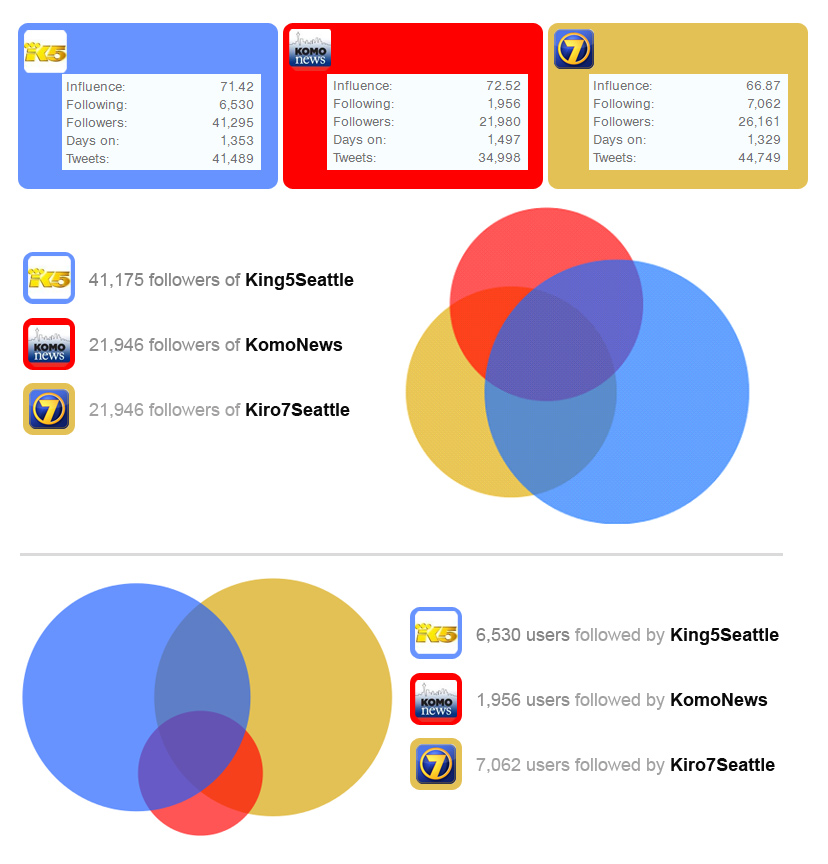As part of an on-going research study I’ve been monitoring and comparing all sorts of different media sources ranging from public television, stock markets, and local Seattle news.
One of the interesting examples I can share for the local community happens to be the local news scene, an interesting mixture of news and syndication channels that covers multiple television channel partners, dozens of new personalities, hot topics, and both real-world and online syndication channels.
To help connect this with the ‘big picture’ I’m going to work through some of the bullet points I’m researching. This article will open up some “food for thought” and I’ll discuss some of the significance of this type of research and how the process overlaps with other business models.
The three Seattle news stations I chose to include in this review were
- King 5 News (@King5Seattle on Twitter)
- Komo 4 News (@KomoNews on Twitter)
- Kiro 7 News (@Kiro7Seattle on Twitter)

Market Penetration
The interesting part of this is that each channel has relatively little overlap, but that they have very little penetration and coverage on the web.
The total number of unique followers between all three stations is only 62,333.
While this is a respectable audience for most businesses, we need to keep in mind that within the Seattle and Bellevue communities alone there are over 150,303 people on Twitter.
Some the numbers above we can see a simply broadcast methodology to how all three stations work: between the three stations they have been on Twitter a total of 4,179 days and have tweeted 121,236 times.
That works out to roughly 29 tweets a day (roughly 1.2 tweets per hour.)
News Stations Aren’t Popular, News is Popular
The chart below is created from Google Insights. When looking at the traffic trends behind all three stations we can quickly see that all three stations have nearly identical traffic trends and online mentions. While all three stations have different shares of the market, they are all sharing the same exact market and have very few differentiating factors.

What does each Audience like?
By using Google keyword data we can see the most commonly associated words and phrases associated with each channel.
This helps detail how audiences actually search for and consume the news. In the list below you can see how most of the news brands have a high correlation to other news brands in the area: if they don’t cover the most popular story identified by the traffic trend chart above, the audience will migrate to other news channels that will fulfill their need (click to see a larger image of the graph.)
 What Did the Data Tell Us?
What Did the Data Tell Us?
When we look at how people seek out sources of information and consume the news we can discover how our business goals overlap with on-going trends.
News stations simple cover the news. They don’t create it.
They also don’t control the ‘buzz’ factor that is generation by word of mouth both offline or online.
In Part II of Seattle News & Media
I’ll dig into some of the search optimization and syndication of these channels.
Have a question? Drop me a note below.